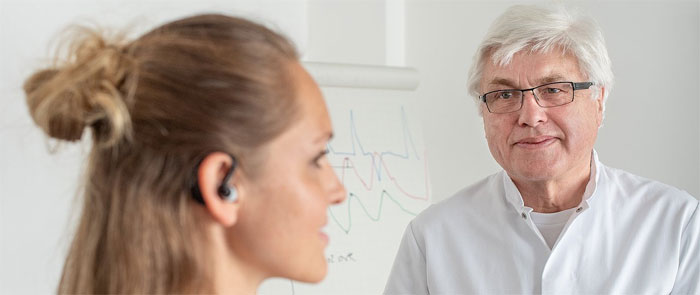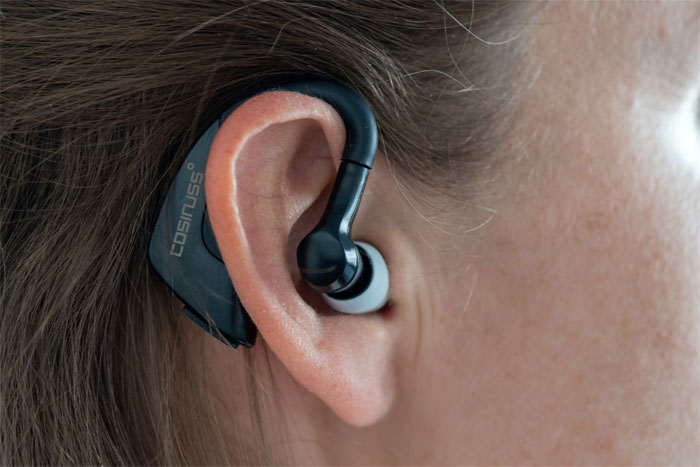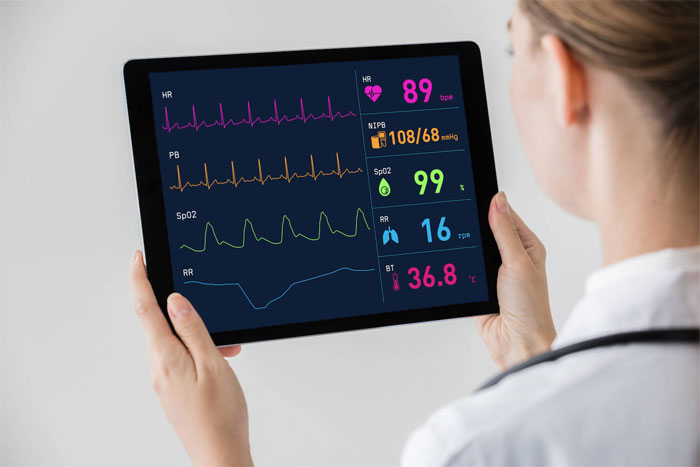A new study from the Technical University of Munich (TUM) has found that remote monitoring of Covid-19 patients can quickly identify stages of health deterioration and facilitate their admission to hospitals for necessary treatment. This system employs a wearable sensor placed in the patient’s ear to measure and transmit data in real-time, which is then sent to doctors for assessment on when the patient needs to be hospitalized.
Like many places around the world, hospitals in Germany can quickly become overwhelmed with Covid-19 patients during widespread infection waves in the community. In addition to aiding patients in need of acute treatment, doctors also strive to admit high-risk patients so they can receive effective care as soon as possible. However, it is not always easy to quickly identify these patients, and many individuals have been sent home only to return days later in significantly worse condition.

This device uses a wearable sensor placed in the patient’s ear.
This new research tested a novel system where newly diagnosed Covid-19 patients at risk of severe illness were sent home with a device designed to monitor several important health indicators. The health data collected by the device is remotely monitored by a team of healthcare professionals, and the patient is called in for hospitalization when these health indicators suggest their condition is worsening.
The device, available on the market from a company called “Cosinuss”, resembles a small hearing aid and contains a photoplethysmography (PPG) sensor, a contact temperature sensor, and an accelerometer. It can measure heart rate, body temperature, blood oxygen saturation (SpO2), and respiratory rate.
The device connects to a smartphone via Bluetooth and measures the patient’s vital signs every 15 minutes. The data is then transmitted to a remote medical center, allowing doctors to monitor continuously.
Approximately 150 patients were recruited for this study. The average age of the group was 60, and each participant had at least one pre-existing condition, including diabetes, obesity, or cardiovascular disease.

The device connects to a smartphone via Bluetooth.
Throughout the study, 20 patients exhibited worsening health indicators and were admitted to the hospital. Seven of these patients required intensive care, and one patient passed away.
It is no surprise that blood oxygen saturation (SpO2) is a key indicator of patient health deterioration. The average measurement in patients before hospitalization was 88%, while the average measurement in those not hospitalized was 96%.
“To our knowledge, this is the first study globally that continuously monitors isolated patients at home remotely and allows for immediate hospitalization in cases of severe health deterioration,” explained Georg Schmidt, a scientist in this research team.
The majority of study participants reported that the system made them feel safer and improved their subjective health. Notably, 90% of the hospitalized patients indicated that they would not have gone to the hospital at the time they were contacted for admission. This suggests that remote monitoring of health indicators can detect disease progression before patients are aware of their deteriorating health.

This system helps Covid-19 patients feel safer and improves their subjective health.
Since this study did not include a control group receiving standard care, it is not possible to determine whether this form of remote monitoring leads to better outcomes compared to alternative methods. Researchers speculate that this health monitoring often results in patients being called into the hospital before they would voluntarily go, meaning treatment can occur at earlier stages, potentially leading to better outcomes and ultimately shorter hospital stays.
TUM researchers stated: “We assume that in the event of a pandemic, such remote monitoring will help alleviate the burden on general practitioners and healthcare staff. Patients can receive adequate care through telemedicine without needing direct contact with doctors or nurses. This means that no unnecessary resources are tied up, and additionally, the risk of infection for healthcare and nursing staff can be reduced. At the same time, the chances of patient survival may be increased, as their clinical course is continuously monitored.”


















































